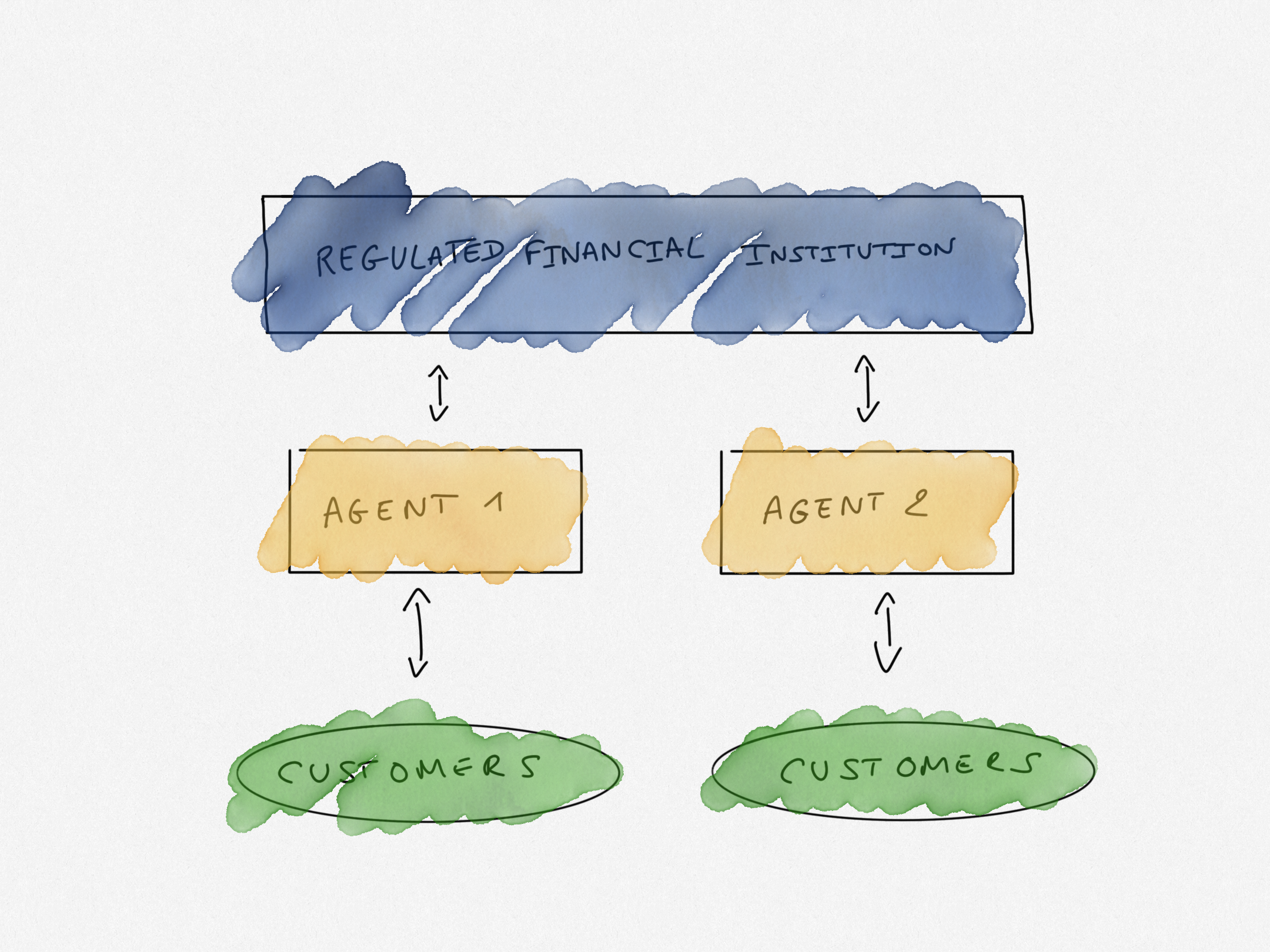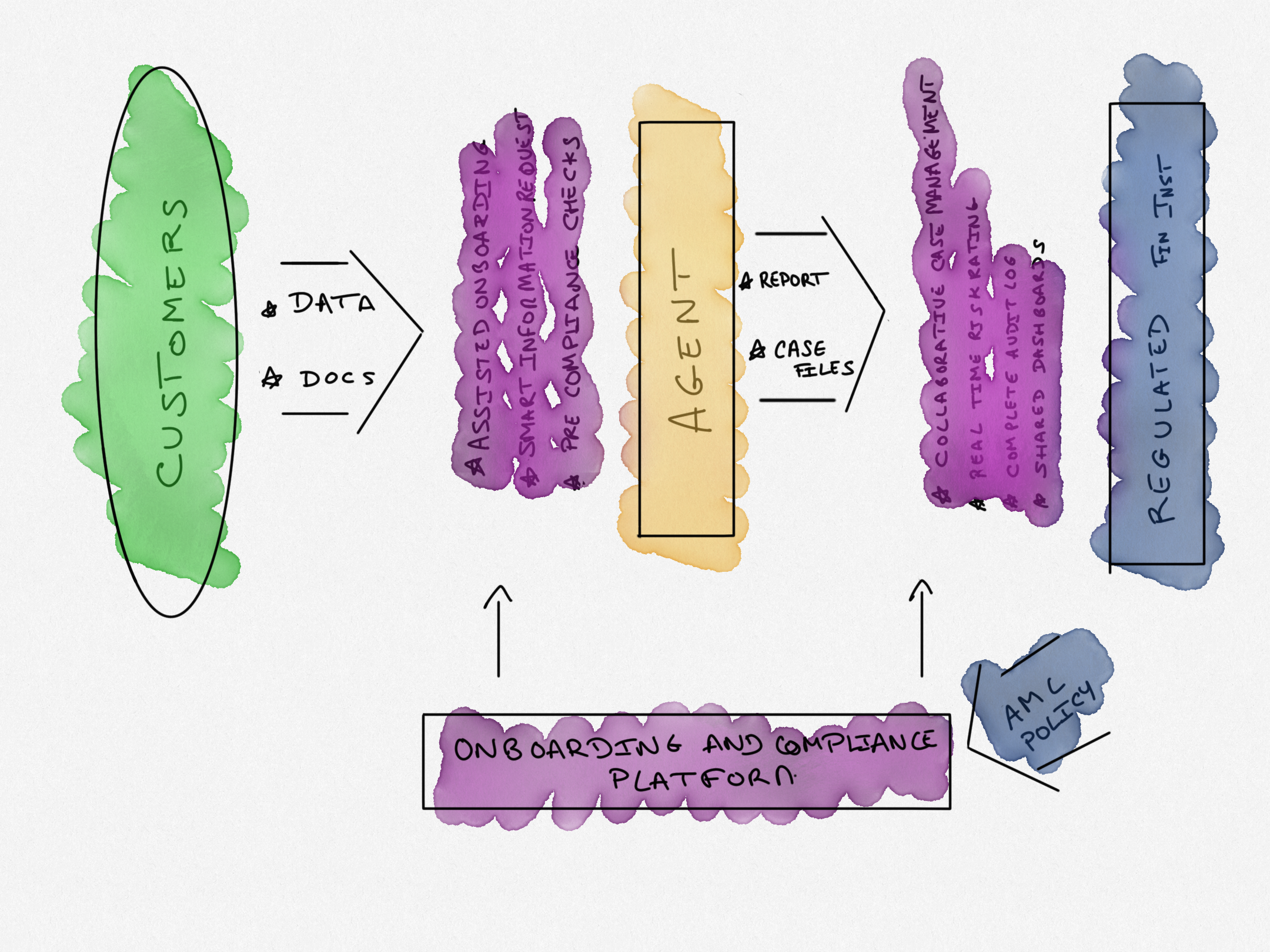Preamble: The recent developments surrounding Modulr's halt on onboarding new intermediaries by the FCA, Railsr's downfall, and Solaris facing increasing regulatory pressure have placed the BaaS model under scrutiny. A deeper dive reveals that the agent model in financial services might be what's truly under the microscope. But let's break this down. What exactly are agents?
Understanding Agents in Financial Services:

At its core, financial services revolve around a structured relationship:
- Licensed Entities: Supervised by regulators, these entities are required to adhere to specific mandates, which include capital and AML obligations. They are frequently subjected to regulatory audits to ensure consistent compliance.
- Customers: They must go through a thorough onboarding and due diligence process so that Licensed entities can validate their worthiness (can I work with that customer?) from a regulatory and a business perspective (do I want to work with that customer?).
However, the delivery of financial services is often done by third parties. It's beneficial for the licensed entity as they can outsource distribution, branding, and customer service. This is the role of the agent.
The benefit for the agent is that they can sidestep the operational expenses tied to licensing and running a regulated entity yet offer a market solution with a financial services component.
Consider a local expense solution that incorporated its card component via a BaaS platform. It stands out for two reasons:
- It offers more than expense payment – categorization, user rights, and financial connectivity. The card is merely one element.
- It has a well-established distribution strategy.
This is a simple theoretical model; however, practically, regulators do not share a consistent view of the agent model. Some of them (like the UK, for example) ask for registration and formal oversight if they are handling customers' funds but otherwise used to be relatively lenient with a simple registration. Others, like most in continental Europe, ask agents to register as soon as there is a form of operational outsourcing from the regulated financial services entity.
Inherent Challenges of the Agent Model:
At a glance, this model appears seamless. Drawing from Ronald Coase's thoughts, if external transaction costs are lower than internal ones, everyone should ideally benefit.
However, fundamentally, there is an asymmetry between agents and regulated financial institutions:
- Differing Responsibilities: While agents can provide services on behalf of the financial institution, only the licensed entity is responsible for the agent's activity from a regulatory standpoint.
- Differing Objectives: The agent aims for effortless customer onboarding, while the financial institution strives for regulatory compliance without compromising economic value by losing agents due to high compliance friction.
- Complex Onboarding workload: Manual tasks make the onboarding process intricate, leading to potential compliance issues for omissions or errors. Who should manage the workload of those is not always well defined.
- Delayed Oversight: Typically, financial institutions review agents' actions retrospectively, introducing ongoing risks and intricate verification processes.

This asymmetry is continuously growing as the regulatory scope of financial institutions keeps widening, and the regulator’s pressure for real-time oversight keeps growing. For example, the Consumer Duty requirements in the UK have introduced a whole new set of responsibilities that the licensed institutions are responsible for and unusually also catch agents in its scope so that their agents need to comply with.
So, does this mean the agent model is inherently flawed?
The Viability of the Agent Model:
- Why agents want part of the responsibilities: Based on our discussions with various agents, the primary reason they chose to be an agent instead of delegating all activities to a financial services player is to control the customer's onboarding experience and lifetime touchpoints (e.g. when refreshed KYC information are needed during the course of the relationship, agents want to remain the customers' interlocutor). They also value their customer insights playing a part in the AML process.
- Why licensed entities prefer delegation: Regulated entities need oversight on customer onboarding and management from a compliance perspective but seek efficiency in scaling the process. Direct engagement with customers can be less efficient, leading to potential delays and dissatisfaction.
Revamping the Agent Model:
The future of the agent model requires a new approach to the relationship between licensed institutions and agents:
- A clear map of roles and responsibilities and a clear understanding of the capabilities required to manage those.
- A strong ability for financial institutions to monitor the activities of their agents and intervene rapidly when they start to diverge from the expected quality.
- A shared knowledge of customers allows the financial institutions to liaise if any communication is required quickly.
Technology will be one of the core components of the future of the agent model.

- The current data related to compliance and customer knowledge is siloed across various systems with the agent and the financial institutions. There is often no single source of truth of the compliance data either within these entities or even more shared across. Aggregating compliance data from various data providers, services, and internal processes and opening it up via API across systems and institutions is critical.
- The current processes are managed within written compliance policies that have very little systematic connection to the actual process in place. Financial institutions seek consistency in compliance checks and risk evaluations. By offering agents a shared compliance platform, they can ensure adherence to set protocols and uniform customer ratings.
- Real-time transparency on compliance performance and risk measurement is often absent in the industry due to infrastructure challenges. The benefit of a more open data and shared software platform is that it will be possible for both agents and regulated financial institutions to monitor their performance in real-time and collaborate on cases.
- For agents, the added benefit is that a platform that integrates and/ or plays a part in their onboarding process will drastically improve the decision-making time at onboarding and the management of ongoing compliance and fraud risk.

